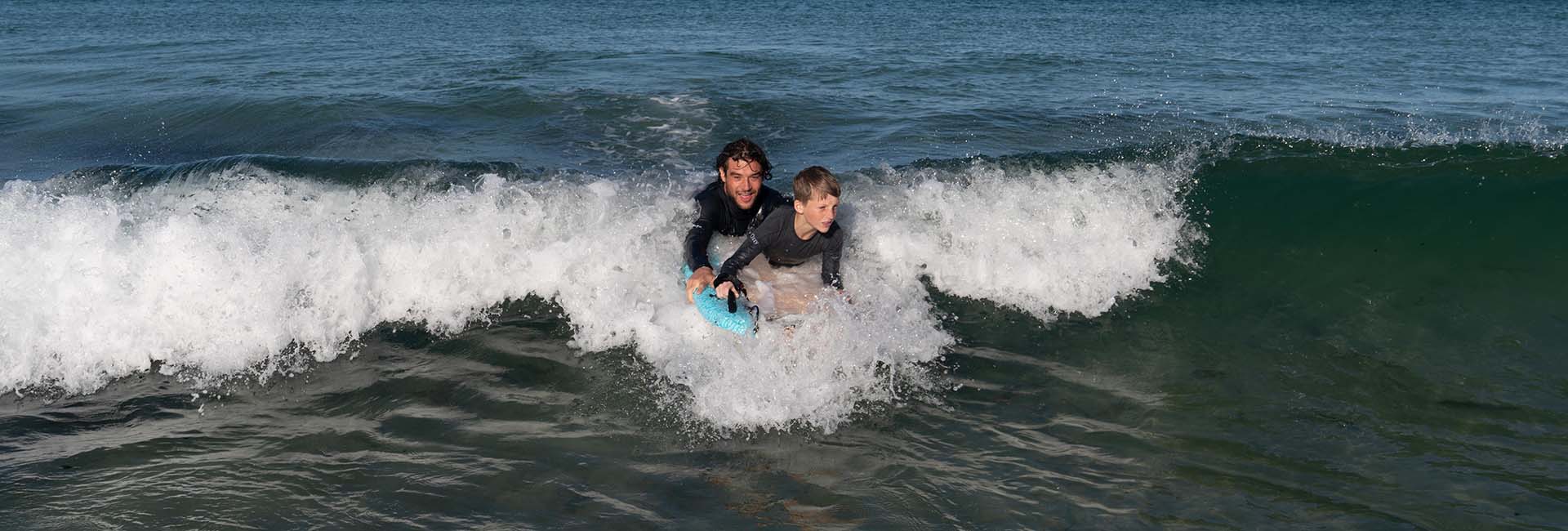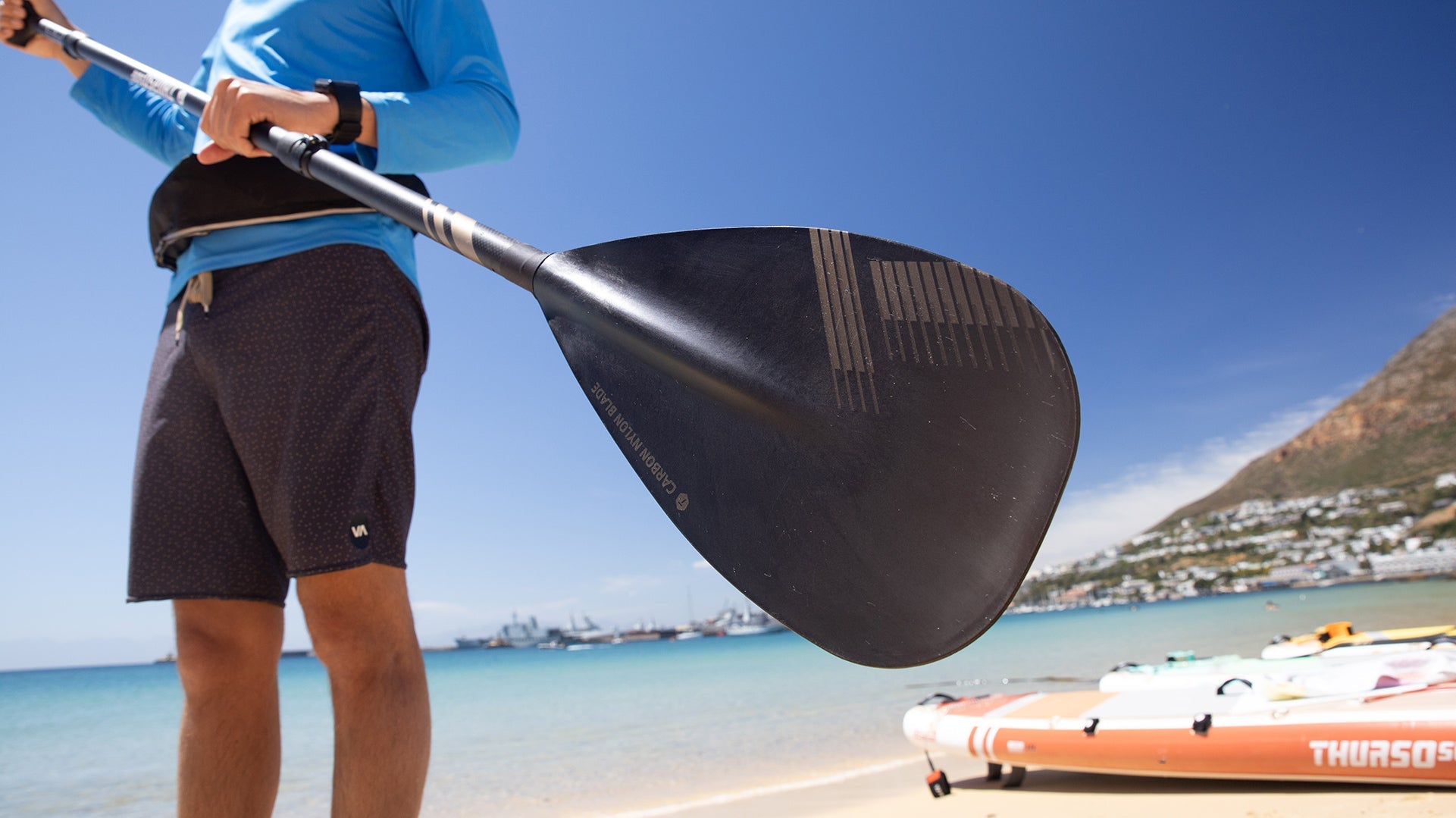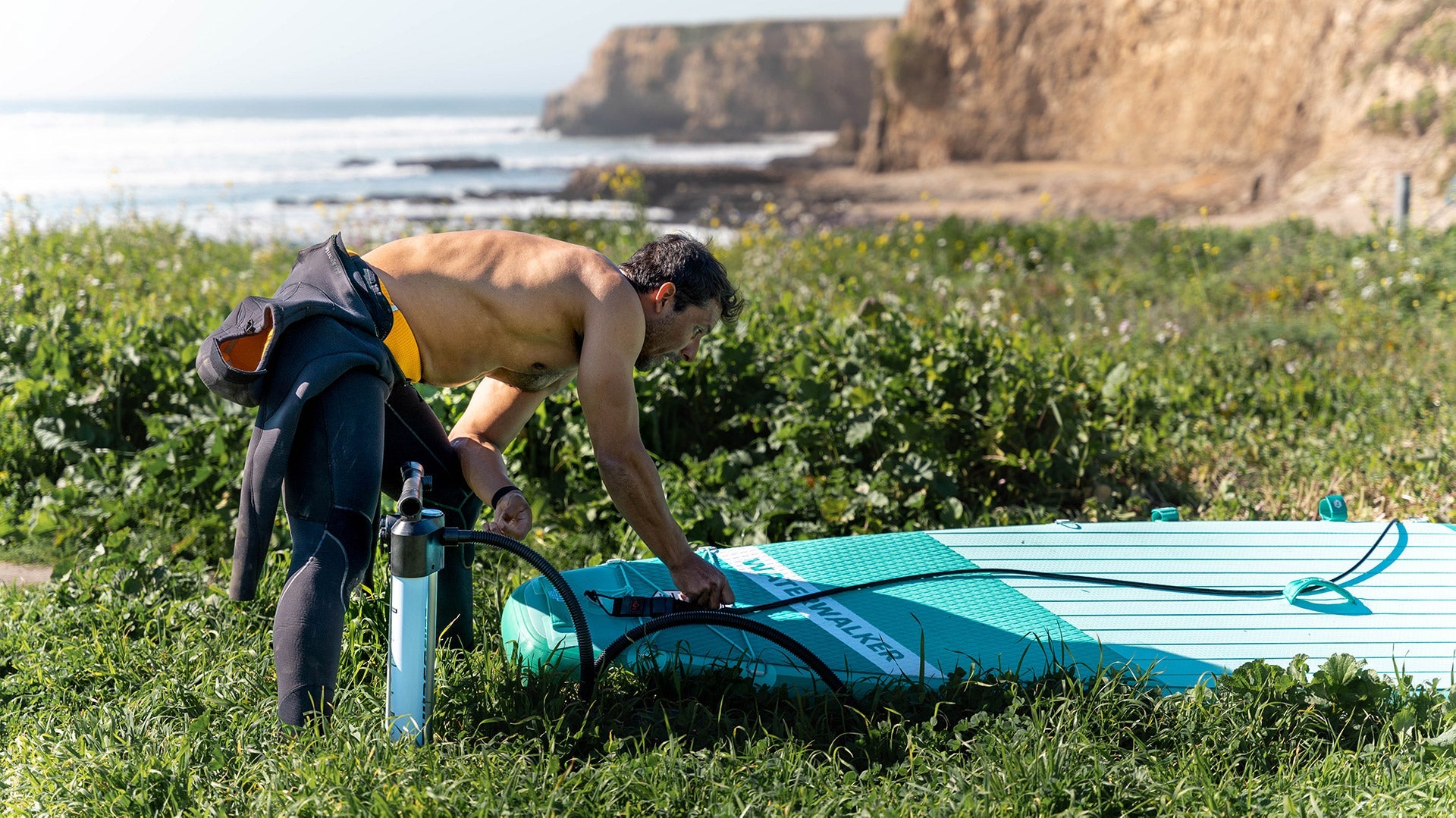Intermediate SUP Lesson - Part 1 - Paddleboard Gear
Summer is just around the corner and is the perfect time to learn some intermediate SUP skills! Last year, we introduced Paddleboard Lesson for Beginners, a series of five posts outlining the knowledge and skill every new paddler should know. Now we are picking up where we left off and levelling up with some intermediate SUP skills and knowledge. Let’s get it started with our first post: Paddleboard Gear.
First, we’d like to introduce our model, Robin Pacquing. Robin is a certified paddleboard instructor, owner of Taga Lawa, and co-founder of Lake Surfistas. She has been paddling and surfing the Great Lakes since 2005. Robin will be demonstrating the skills as we break them down for you. All footage was shot on location in Toronto at the beautiful Ashbridges Bay Park on Lake Ontario.

Robin is your guide for the Intermediate SUP Series
Intermediate SUP Lessons – List of Posts
- Intermediate Paddleboard Lessons – Part 1: Paddleboard Gear – You’re reading it now!
- Intermediate Paddleboard Lessons – Part 2: Efficient Paddle Board Stroke
- Intermediate Paddleboard Lessons – Part 3: Bracing, Footwork, and Draw Strokes
- Intermediate Paddleboard Lessons – Part 4: Crossbow and Pivot Turns
- Intermediate Paddleboard Lessons – Part 5: Paddling Through Chop and Waves
Paddleboard Gear
When starting out paddleboarding, you aren’t so concerned with the gear you are using. As long as you have a board, paddle, and fins, you’re good to go. But once you get more comfortable on a SUP board and have some experience under your belt, you’ll want to start paying more attention to your equipment choices. Having a good grasp of paddleboard gear will allow you to progress, have more fun, and become an even better paddler!

Our Expedition touring board and Waterwalker 120 all-around SUP
Boards
Paddleboards are made as either hardboards or inflatables (our personal fave!). Hardboards are solid and fixed in shpae, while inflatables can be deflated for easy storage when not in use. Both hardboards and inflatables are divided into four main categories: all-arounder, touring, race, and surf, plus speciality boards.
All-Arounder
The jack-of-all-trades, an all-arounder can do it all! For most people, an all-arounder will be their first board. Stable and wide, it is shaped with a round nose and tail for maximum stability. All-around boards are usually anywhere from 10′ to 12′, with board selection dictated by the rider’s weight. Typically, these boards are 30-34” wide for easy balance and are fun for everyone. Our flagship Waterwalker boards are good examples of all-around boards.
Touring
A touring board is for the paddler who wants to venture out further and explore. Touring boards are longer than all-arounders, ranging anywhere from 11’ all the way up to 14’ in length. They are notable for a sharper nose and squared off tail, allowing the rider to go faster, further, and track more easily. They are slightly narrower than the all-arounder, ranging from 28″-32″ but wide enough to provide some balance and space for extra cargo. Take a look at our Expeditions boards to see what we mean!
Race
If you have the need for speed and a competitive spirit, a race board is a must have! These boards are designed specifically for SUP racing. They are the longest and narrowest of all the SUP boards and are usually hardboards (although there are a few inflatable race boards out there). A sharp nose, slightly narrow tail, and recessed deck are features of a race board. They are either 12’6 or 14’ as these are the two main race categories. As narrow as 23″ and up to 30″ wide, they are the least stable of all the board types but cut through the water quickly and efficiently.
Surf
The smallest of the SUP board types are those meant for the surf. Not longer than 10′, SUP surf boards come in a range of shapes depending on the conditions they are ridden in. One common feature is the pulled in tail which makes it easier to turn and sharp rails to make them more responsive when riding a wave. Like race boards, surf boards are usually composite but can sometimes be found as inflatables for beginners.
Specialty
Aside from these four main categories, SUP boards also come in a variety of specialty types. Some examples of this are yoga/fitness, fishing, downwind, river, oversized, tandem, kids, etc. We offer three specialty boards: the Prodigy Junior SUP for kids, the Tranquility Yoga SUP for those wanting a workout platform, and the Max for fishing and multiple passengers.

Robin will be using our Carbon Hybrid Paddle to demonstrate the skills
Paddles
Paddles deserve as much attention as boards. They propel us forward, provide balance, and allow us to control the speed and direction of our boards. Paddles can be fixed length or adjustable, and can also come in three or even five pieces to pack down for travel and storage. While they might seem simple, a paddle’s length, blade, and materials can affect our performance.
Length
Did you know a paddle’s ideal length can change, depending on your SUP activity? Let’s start with the baseline for paddle height, recommended for the average paddler. The top grip should reach your wrist when you extend your arm straight up. This is a great starting point.
However, as an intermediate paddler, you might want to play around with the length. Those who are touring can bring the height down to 6-8″ above your head height. SUP surfers will want an even shorter length, somewhere between your forehead and eyebrows. If you have an adjustable paddle, play around with the length and see what suits you. You should be able to submerge the blade in the power phase of your stroke without having too much of the shaft in the water (psst – we’ll talk about the phases in the next post). Always make small changes and see how your body feels after paddling with the modified length.
Blade
Paddle blades might look similar, but there can be subtle differences. Blades come in different sizes and outlines. If you go beyond cruising, it is worth knowing the size and shape options available to you. Generally, the lighter you are, the smaller the surface area of your blade should be. A blade that suits your size will be more comfortable.
In terms of shape, the classic tear-drop shape works well for most SUP activities. However, those wanting to go long distances, such as in touring or racing, might want to consider a narrower shape which will take less effort to move through the water, minimizing fatigue and strain. SUP surfers should go for a wider blade to displace large amounts of water more rapidly, ideal for moving quickly to catch a wave.
Materials
Paddles are available in a variety of materials; aluminum, carbon fiber, wood, fiberglass, plastic, nylon, etc. Paddles made of aluminum and plastic are cheaper but are very rigid and can be heavy. You might want to consider a paddle made of carbon, fiberglass, or a carbon-nylon blend. Not only are they more responsive to your paddle stroke, you’ll feel less fatigued as they are lighter. Your shoulders will thank you! Our Carbon Hybrid and Carbon Elite paddles give you great options at different price points!

Are you using all three fins? It might be time to try a single fin instead!
Fins
As a beginner, you probably weren’t too fussed about fins. But as an intermediate paddler, you’ll want to take a closer look. There is a lot to know about fins; in fact, we dedicated a whole post to it. The most important tip when progressing in SUP is to try only using your single, center fin. It will help you go faster by reducing drag. While the side fins help a novice with tracking and balance, more experienced paddlers should have no problem navigating with a single fin.
Also, pay attention to the materials of your fins. While a plastic fin is hardy and does the trick, a carbon or fiberglass fin might give you the edge in performance you need, especially when touring, racing, or surfing. Boards with US fin boxes (like our Expeditions boards) will allow you to swap out different fins.
Finally, if you have the option of changing the fin position in the fin box, try the following trick. Install your fin at the front of the fin box to turn easier, slide it to the back for tracking, or put it in the middle if you need stability.
Conclusion
Now that you know a bit more about your SUP gear, it’s time to grab your board and get in the water! Next up, we’ll be improving your paddle stroke so you can be the best paddler out there. In the meantime, look over your gear, figure out what type of board is best for you, play around with your paddle height, and consider riding single fin. See you next time!






















Leave a comment